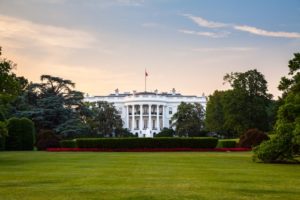The U.S. Supreme Court decision issued yesterday in South Dakota v. Wayfair has been awaited by many brick-and-mortar retailers and state budget-makers for over 25 years. In a nutshell, the Supreme Court’s decision (5-4) will permit states to move forward with sales tax collection from online retailers.
The Court overturned the Quill v. North Dakota decision (and Bellas Hess on which Quill was based) dealing with sales tax on mail orders – dating back to 1992, well before the internet boom. The Court found those old decisions to be “unsound and incorrect” and deemed them to be “an extraordinary imposition by the judiciary on states’ authority to collect taxes and perform critical public functions.” The old cases found that requiring the collection of sales tax, when the seller has no physical presence in the state, an undue burden on interstate commerce – a constitutional issue. The “physical presence” test effectively prohibited states from requiring an out-of-state business to collect sales tax from its customers. But now the Court has stated that it “can no longer support the prohibition of a valid exercise of states’ sovereign power”. To put it simply, times have changed. There is readily available software that online retailers can utilize to set up the sales tax collection; it’s no longer a big deal. Separately, the online retail market has become so huge in the last two-plus decades as consumer shopping preferences have shifted; that’s made it all the more imperative that the segment be on a level playing field tax-wise with brick-and-mortar stores.
 The Court also addressed the widely-held notion that this issue needed to be resolved by Congress. The Court responded to that saying, “It is inconsistent with this Court’s proper role to ask Congress to address a false constitutional premise of this Court’s own creation.” In other words, the Court created this dilemma, if you will, with the Quill case and determined it needed to be the one to then provide a remedy.
The Court also addressed the widely-held notion that this issue needed to be resolved by Congress. The Court responded to that saying, “It is inconsistent with this Court’s proper role to ask Congress to address a false constitutional premise of this Court’s own creation.” In other words, the Court created this dilemma, if you will, with the Quill case and determined it needed to be the one to then provide a remedy.
The new ruling essentially upholds the South Dakota statute that allowed the state to require online sellers to collect sales tax if they deliver over $100,000 in goods into the state, or have over 200 separate transactions with customers in the state. (Technically, the case was remanded to the South Dakota Supreme Court to issue a new determination without the Quill case serving as a controlling precedent.) The Court found that the requirement under other precedent – that the seller have legal nexus in the state – was clearly met by the sales thresholds of the South Dakota Act.
The Indiana Chamber has been a long-time advocate for online sales tax collection; it is one of the key goals in our Indiana Vision 2025 plan. State lawmakers, led by former Sen. Luke Kenley, were also attuned to these issues and quite wisely enacted legislation in 2017 that was modeled after the South Dakota statute. In fact, our law is essentially identical. This means that with a law that the U.S. Supreme Court has now found legally sufficient, Indiana is poised to begin requiring online sellers to collect and remit Indiana sales tax from their Indiana customers. Again, this is directed at those online sellers who meet the $100,000 or 200 transaction thresholds outlined above.
It is worth mentioning that Hoosiers are already legally obligated to pay the online sales tax when they file their state income tax returns, but as a practical matter almost nobody does. Uncollected sales tax from online transactions has resulted in substantial loss of revenue to states, thus increasing the tax burden on those who do pay the taxes they owe. Estimates place the uncollected tax for the state of Indiana at more than $100 million annually, perhaps as high as $200 million. That number has grown exponentially with the popularity of online shopping and is only going to keep rising.
So here’s to the U.S. Supreme Court for rectifying this long-standing problem, leveling the playing field between businesses and placing the sales tax burden evenly.


 This “physical presence” test was affirmed in Quill v. North Dakota (1992) when the Court ruled that North Dakota could not require a mail order company to collect its sales tax, again citing the requirement as an unreasonable burden on interstate commerce. But the Court’s opinion seemed to acknowledge that different circumstances could yield different results.
This “physical presence” test was affirmed in Quill v. North Dakota (1992) when the Court ruled that North Dakota could not require a mail order company to collect its sales tax, again citing the requirement as an unreasonable burden on interstate commerce. But the Court’s opinion seemed to acknowledge that different circumstances could yield different results.





